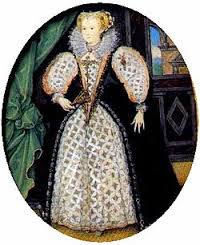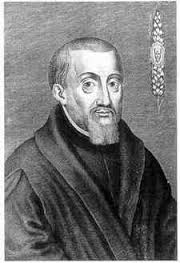Penelope Devereux: Life Story
Chapter 5 : The Jesuit Mission (1594)
Any biography of Robert Devereux, Earl of Essex, characterises him as rash, impetuous, a risk-taker and of poor judgement. It would seem that Penelope had some of the same characteristics. Not content with a potentially treasonable correspondence with the King of Scots, and an affair that was obvious to anyone who knew her, Penelope was also involved in the far more serious business of harbouring a Catholic priest.
By the 1590s, it was treason for any Englishman to be ordained as a priest in the Roman Catholic Church or for any Jesuit or priest ordained after the Queen’s accession to be in England. It was a crime to hear the Catholic mass, and it was a crime to harbour or give succour to any priest.

The Government was at pains to explain that persecution was not for the matter of being Catholic, but for the political dimensions of support for Spanish invasion and undermining of the Queen’s legitimate rule. Persons caught harbouring a priest would be subject to fines, confiscations, imprisonment, and potentially, for repeated offences, death. (Read more about the women who maintained the old faith underground here)
Despite this, Penelope hid Father John Gerard, one of the most important men in the Catholic hierarchy in England in her own house at Leez. Gerard had been staying with the Wiseman family at Braddocks Manor, near Thaxted. The Wisemans were connections of Lord Rich, and despite their very different religious beliefs, Penelope was Godmother to one of the Wiseman children. Mrs Wiseman, after one of the raids on her house, spent time with Penelope at Leez, and arranged for her to receive Gerard. He came to Leez in the early spring of 1594, in the guise of a visiting friend.

According to his later account, Penelope was close to conversion, but wanted to consult Mountjoy. Mountjoy, a man of intellect and education, prepared questions for Father Gerard, with the assurance that if they could be answered satisfactorily, he, too, would convert. Whether the answers were unconvincing, or the risk was too high, Mountjoy, and hence Penelope, remained unreconciled to Rome but she seems to have remained sympathetic to the Catholic cause, a position which, later, endeared her to Queen Anne.
At this distance, we cannot know whether Penelope’s interest was religiously motivated, whether she was a natural risk-taker and wanted to provoke her husband and family, who were largely on the Puritan end of Protestantism, or whether she was taking up a fashionable cause. It certainly appears that the young and fashionable court circles of the 1590s flirted with Catholicism, perhaps as a natural reaction to the control that Burghley, Walsingham, Knollys and the rest of the staunchly Protestant old guard exerted. It may be that she was naturally compassionate and sought to save Gerard from the dreadful death he would have suffered had he been caught by the authorities. (He was later caught, imprisoned, tortured, and escaped).
Lady Penelope Devereux
Family Tree






